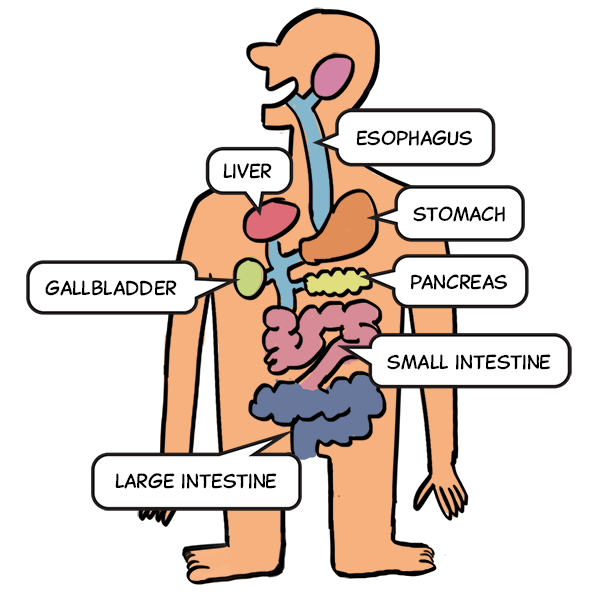The Fantastic Journey of Food
Have you ever wondered what happens to your food after you swallow it? It goes on a fantastic journey through your body in a process called digestion. This is how your body turns food into the energy you need to grow, play, and learn.
The Journey
- The Starting Point – Your Mouth: When you take a bite of food, your teeth break it into smaller pieces. Your saliva (the watery stuff in your mouth) helps soften the food and makes it slippery enough to travel easily down your throat.
- The Food Slide – The Esophagus: After you swallow, the food moves down a tube called the esophagus. It’s like a slide that takes the food from your mouth to your stomach.
- The Mixing Bowl – The Stomach: Next, the food lands in your stomach, where it gets churned around with stomach acid and digestive enzymes. This turns the food into a soft, mushy substance called chyme.
- The Nutrient Road – The Small Intestine: The chyme then travels to the small intestine. Here, all the good stuff from your food (like vitamins, minerals, proteins, fats, and sugars) gets absorbed into your bloodstream and delivered to every part of your body.
- The Recycle Bin – The Large Intestine: Anything your body can’t use moves into the large intestine. Here, water is absorbed from the waste material and it forms into stool (or poop).
- The Exit Door – The Rectum and Anus: The stool is stored in the last part of the large intestine, the rectum, until it’s ready to leave your body. When you go to the bathroom, the stool exits through an opening called the anus.
- Special Helpers – The Liver and Pancreas: Some organs give extra help during digestion. The liver makes a liquid called bile that helps break down fats, and the pancreas makes a chemical called insulin. Insulin is like a signal to your cells that tells them to suck up sugar in your bloodstream.
Bacteria: The Tiny Helpers
Believe it or not, you have billions of tiny organisms living inside you that help with digestion! These bacteria break down tough parts of food that your body can’t digest on its own. They also fight off harmful bacteria and strengthen your immune system.
Wrapping Up
Isn’t it incredible to think about all the things your body does just to turn food into energy and get rid of waste? So the next time you eat your favorite meal, remember the amazing journey that food takes through your body.
